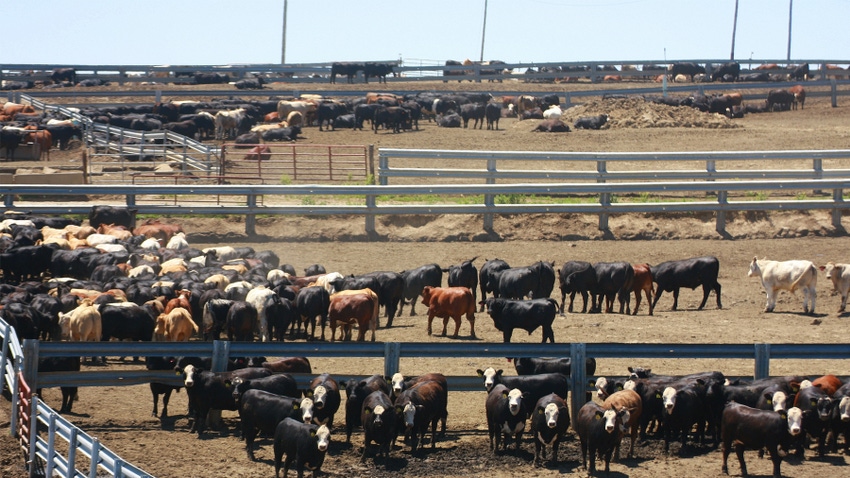
Blizzards, searing heat, flooding, ice, drought — feedyards have to be prepared for whatever adverse weather condition comes their way.
With a little bit of forethought, cattle producers can make sure that they can optimize their feedyard management for best cattle performance, explains Zachary Smith, assistant professor in animal science at South Dakota State University, and John Schroeder, manager of Darr Feedlot, Cozad, Neb. The two spoke during the 2023 Cattlemen’s College in February.
Bedding
Smith’s work shows that the gains from enhanced cattle comfort are worth the cost of applying straw bedding to pens. With just 4 pounds of wheat straw bedding per steer per day during the bitter winter months, cattle showed an increase in average daily gain of about 20% over the cattle that didn’t have the extra bedding in their pens, Smith says. That ran to about $1.21 per pound in value of gain, he adds.
“The return on investment is 2 to 1, down to 1 to 1, so it’s not a high-yielding return on investment,” he says. “But you pay for bedding no matter whether we use it or not. Those without bedding took an extra 35 days of yardage and feed to get to the same outweight, so we either bought bedding and applied it to the cattle — or we didn’t, and we suffered reduced cattle gross performance.
Airflow
Blocking the wind in the winter can help cattle conserve their body heat and the amount of energy they expend in keeping warm. But, at the same time, something like a shelterbelt, or overgrown weeds, can cause problems in the summer, Smith says. Cattle with access to airflow in the summer are better able to maintain their growth performance, he says.
Schroeder says that when Darr was redesigning pens, it not only installed two water tanks per pen, but also replaced older waterlines for added capacity. It went from being able to pump 125 gallons per minute up to 750 gallons per minute, and maintain a 47 psi through the whole system — ensuring there’s water in every tank at all hours of the day to help cattle cool themselves. Darr also builds its mounds in pens higher in the summer, so cattle can get up and into the airflow — and they add shade. It will also consider adding straw bedding to the pen floor, as a way of reflecting heat that would be absorbed by darker soil.
Implants
Smith says growth enhancement technologies have been in use for many years, allowing cattle producers to put on 50% more beef per cow since 1980.
“So, we’ve lowered the cow herd from 45 million head to 30 million, and that’s a one-third reduction,” Smith says. “Yet we’re able to maintain the same beef output.” Growth enhancement technologies can help cattle reach their genetic potential, he adds.
However, if the goal is to feed cattle to meet a specific program that prohibits the technology, feed heifers, Smith advises. Where steers can gain 20% more per day with an implant, heifers typically respond to gaining just 4% more per day, he says.
About the Author(s)
You May Also Like






